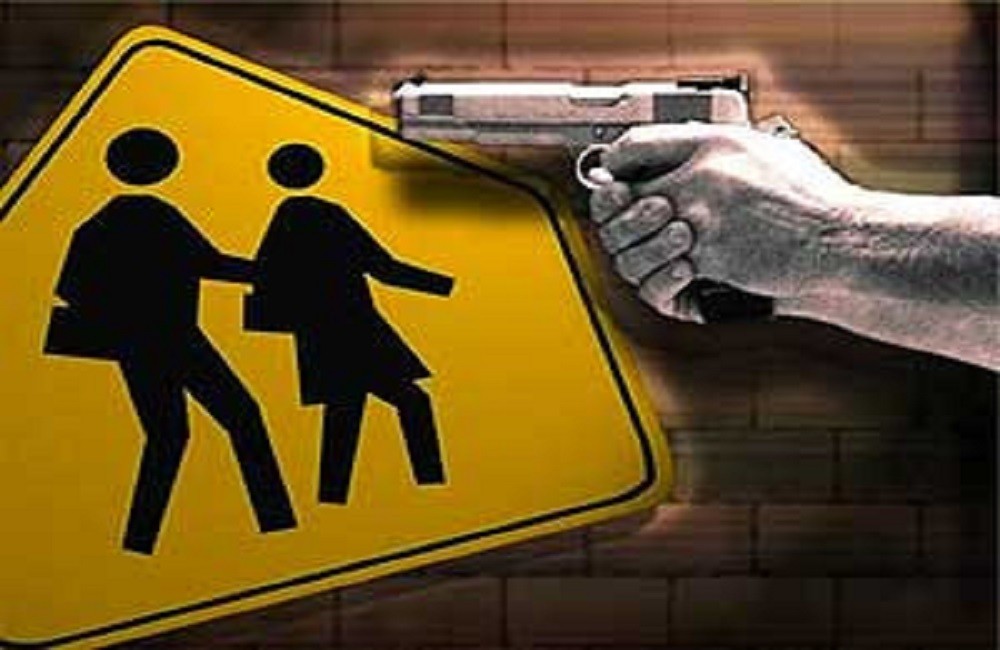An article by Denise-Marie Ordway republished from the Journalist’s Resource, a website examining news topics through a research lens, curating top academic and governmental research and synthesizing the content into clear data points and accessible language. Read the original article.
Before the end of February 2018, dozens of students were killed or injured in school shootings in Kentucky and Florida. The previous year, fatal shootings rocked campuses in Ohio, New Mexico, California and other states. As reporters rush to collect facts, they also try to put these events into context, focusing, for example, on questions about gun policies and how local communities are grappling with the sudden deaths of children, teachers and coaches.
Long after news crews leave, though, those who witnessed these tragedies will bear their consequences. Extensive research suggests that exposure to violence can affect children’s health and well-being for years into the future. It also can desensitize them, leading them to see violence as an acceptable way to deal with problems.
Below, we have pulled together research that looks at other impacts that might seem less obvious to reporters covering the issue. These studies offer insights into how student performance and school enrollments may change following a shooting. We also have included resources aimed at helping journalists improve their coverage of school shootings, including tips on interviewing children and an explainer on firearm technology and vocabulary.
- “The Relationships Between Violence in Childhood and Educational Outcomes: A Global Systematic Review and Meta-analysis”: From the University of Edinburgh, China Agricultural University, Georgia State University and the Centre for Population Health Sciences, published in Child Abuse & Neglect, 2018. By Deborah Fry, Xiangming Fang, Stuart Elliott, Tabitha Casey, Xiaodong Zheng, Jiaoyuan Li, Lani Florian and Gillean McCluskey.
This research article examines dozens of studies from 21 countries to understand the relationship between different types of violence in childhood and a range of education-related outcomes such as academic performance, absenteeism and graduation and dropout rates. The study finds that all types of childhood violence have an impact. For example, children who experience physical violence are 20 percent less likely to graduate. Children who experience any type of violence are less likely to earn high grades and test scores
- “The Effect of Community Traumatic Events on Student Achievement: Evidence from the Beltway Sniper Attacks”: From American University, published in Education Finance and Policy, May 2017. By Seth Gershenson and Erdal Tekin.
This study looks at how traumatic events such as mass shootings affect the performance of students living in the community where the events occurred. Gershenson and Tekin focused specifically on how elementary school students in Virginia performed on standardized tests after the “Beltway Sniper” attacks of 2002. “The main results indicate that the attacks significantly reduced school-level proficiency rates in schools within five miles of an attack. Evidence of a causal effect is most robust for math proficiency rates in the third and fifth grades, and third grade reading proficiency, suggesting that the shootings caused a decline in school proficiency rates of about 2 to 5 percent. Particularly concerning from an equity standpoint, these effects appear to be entirely driven by achievement declines in schools that serve higher proportions of racial minority and socioeconomically disadvantaged students.”
- “The Effect of High School Shootings on Schools and Student Performance”: From Louisiana State University and University of Missouri, published in Educational Evaluation and Policy Analysis, March 2016. By Louis-Philippe Beland and Dongwoo Kim.
This study suggests that high schools where fatal shootings have occurred experience a 5.8 percent drop in freshmen enrollment, on average, following the event. The researchers also examined standardized test scores in California and found that scores in math and English declined for students who remain enrolled after the shooting. Beland and Kim did not find statistically significant impacts on graduation or suspension rates or student attendance.
- “School Shootings and Private School Enrollment”: From the University of Wisconsin-Milwaukee, published in Economics Letters, February 2013. By Rahi Abouk and Scott Adams.
This study finds that school shootings increase enrollment at private high schools, particularly in suburban and rural areas. The researchers looked at enrollment at public and private high schools nationwide between 1998 and 2009 and matched that data with school shooting reports. Private school enrollments increased an estimated 9.7-11.6 percent in the academic year immediately following a shooting. Meanwhile, public school enrollment fell an estimated 0.4-1.3 percent. “Parents overestimate the potential for such events to be repeated, particularly those that occur in suburban and rural areas, because of intense media coverage,” the authors write.
Other resources:
- The PolitiFact fact-checking organization explains the misleading number of school shootings that some national media outlets reported following the fatal shooting in Parkland, Florida in February 2018.
- The national Education Writers Association offers a tip sheet on covering school shootings and an hour-long webinar on interviewing children.
- Investigative Reporters & Editors offers tip sheets on how to investigate gun dealers and funds set up to aid survivors.
- Columbia University’s Dart Center for Journalism & Trauma offers a range of resources for covering mass shootings, including tips on working with victims and survivors and an explainer on firearm technology and vocabulary.
- We did a Q&A with criminologist Adam Lankford, who argues that journalists should not report the names or picture the faces of mass shooting suspects.
‘School shootings: Impacts on student achievement, enrollment’ by Denise-Marie Ordway, Journalists Resource
Republished under CC BY-ND 4.0
